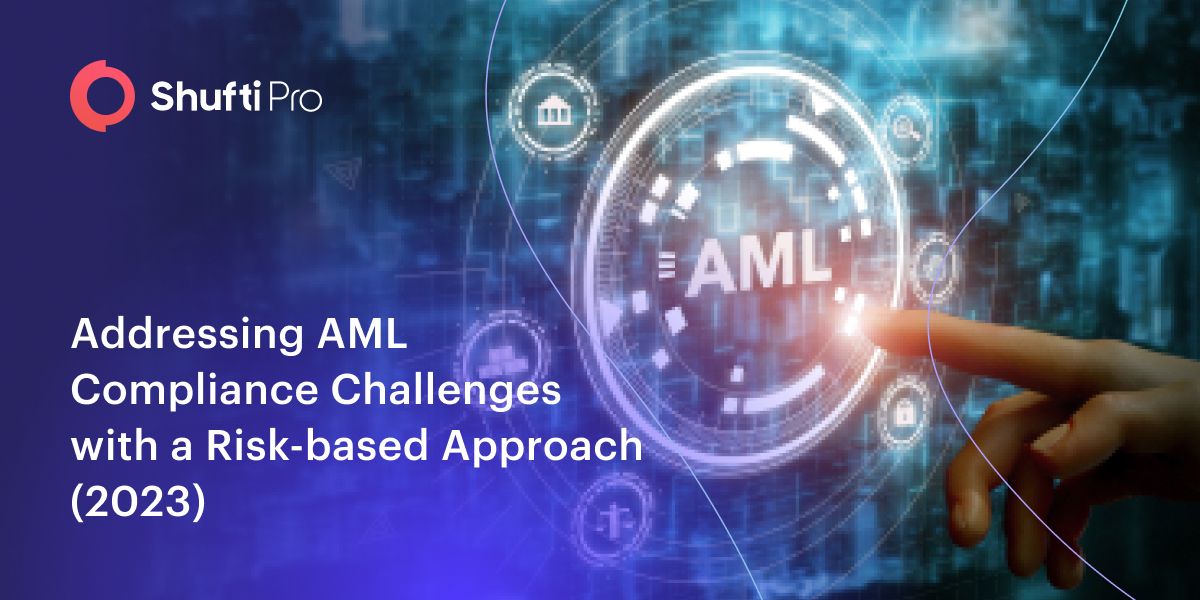Addressing AML Compliance Challenges with a Risk-based Approach (2023)

Regardless of how big or small a company is, the after-effects of Covid-19 and the global financial crisis have sent chills down their spines. When it came to the risk assessment process, established businesses that were unlikely to be impacted appeared to be extremely susceptible and helpless.
According to a KPMG survey, More than 50% of firms coughed up heavy fines for regulatory failures and non-compliance in the previous year alone, and 55% of businesses saw overall profit losses of 1%.
Organizations face a barrage of new rules and risk mitigation recommendations, most of which are costly, in addition to remote work settings and significant cyber threats. An efficient risk assessment framework assists them in such situations by enabling them to detect, analyze, mitigate, and monitor company risks.
Top 5 Challenges of AML Compliance
1. Rising Compliance Costs
Risks and regulatory complexity are both getting more complex. Yet, the cost of compliance is also skyrocketing. Instead of viewing risk and compliance management holistically at the enterprise level, many financial organisations perceive it from a departmental perspective. Due to the segmented compliance management approach, inefficiencies and expenses are greatly increased.
The cost of compliance is typically $5.47 million for a company. Organizations must be cautious of the fines imposed for noncompliance, which can be nearly 2.7 times the rising compliance cost.
The GDPR, which is the strictest and most expensive, provides two categories of fines:
- A non-serious violation may result in fines of more than €10M, or 2% of the company’s global revenue
- A serious one, though, might cost a corporation up to €20M, or 4% of its global revenue
2. Changing Regulations
The majority of corporations seek to grow their significant revenue arms in the US or EU. Organizations find it very challenging to maintain the same enthusiasm for adopting the new standards, given the present plethora of new regulations. They frequently struggle with the number and complexity of regulatory changes.
Before the financial downturn, it was easy to monitor regulatory developments manually. The present regulatory frameworks, however, are proving to be ineffectual at keeping up with the changes as authorities continuously revise regulations for disruptive technologies like digital assets, fintech, and cryptocurrencies.
In order to implement the subsequent wave of regulatory frameworks, a strong technology will be crucial in developing a regulatory change management system. A “wait and watch” strategy is no longer effective. organisations will need to take proactive measures to address evolving requirements before it’s too late.

3. Inefficiency in Operational Risk Management
Many organizations still do use legacy software for day-to-day tasks and leverage office Many firms still rely on outdated software for routine activities and use office suites like spreadsheets and Excel as their main method of data management and archiving. These solutions are adept at managing everyday tasks, but they lack the resources to create corporate audit trails and reports. These numerous manual approaches quickly become difficult to manage, susceptible to mistakes, and frequently result in inefficiencies in the monitoring process.
Another point worth mentioning is that in most firms, operational risk management serves as a vital link in meeting investor and consumer needs. So why do operational risk and risk management get pushed to the sidelines?
Competing priorities and a paucity of value perception are two very pertinent causes. Operational risk management frequently takes a backseat since decision-makers don’t give it the same importance as revenue development and business growth.
- There is a need for improved awareness of operational risk management’s significance and the costs associated with failure
- Frameworks and procedures for measuring and evaluating risks that would accurately depict the organization’s risk profile
4. Lack of Comprehensive GRC Framework
Organizations today place a strong emphasis on growth prospects. Despite the fact that this is excellent from a revenue standpoint, the requirement for creating a flexible and thorough GRC framework is sometimes overlooked, which has a negative long-term effect on them.
Building a comprehensive GRC framework that could cover the entire organisation becomes very time-consuming if different Strategic Business Units (SBU) are not adequately connected and coordinated with regard to risk and compliance management. Every department must work together to define a comprehensive data-driven plan to prioritise necessary activities and high-impact audit activities in light of the continually changing requirements and their increasing complexity. By doing this, any risk-related mishaps are exposed as little as possible.
5. Lack of Alignment Between the Culture of Organization and GRC
The effective implementation of GRC greatly depends on the culture of a financial organization. Top-level management must take the initiative to promote the change and spread awareness of risks and compliance management in a top-down manner.
Cultural inertia and reluctance to change can hinder the effectiveness of an institution’s comprehensive GRC framework unless taken seriously and backed by an organization-wide push to educate the staff, embrace the required changes, and achieve buy-in from all partners.
Risk-based Approach – The Key to a Fraud-free World
A risk-based approach understands the risks that your business is facing and implements control for them in accordance with the degree of damage they can cause.
Looking ahead to 2023, it is clear that financial institutions will have to redefine the enhanced risk-based strategy to combat financial crime. They would have to concentrate their efforts on spotting anomalies and pinpointing financial fraud that crosses over between AML and fraud by finding distinctive insights and establishing a single point of truth.
This is where Shufti’s AML solution proves to be a great bet, Screening against 1700+ global watchlists and that too in less than a second, safeguarding firms from becoming a hub of fraudulent activities.
Still confused about how an AML solution does the job for you?










